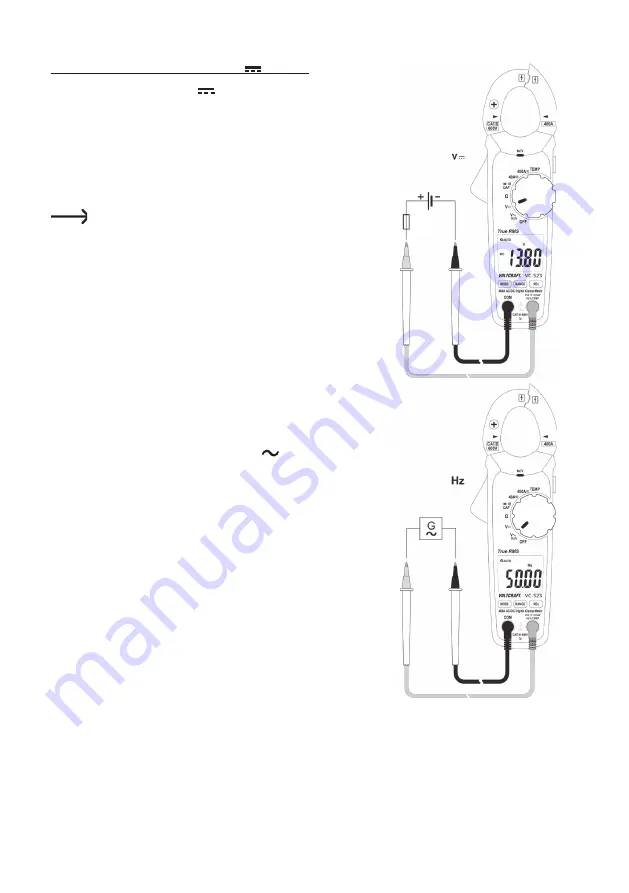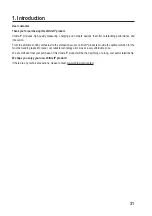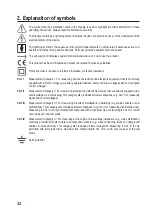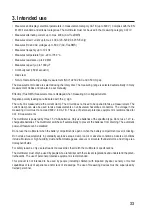
43
Follow the steps below to measure DC (V )voltages:
• Turn the DMM on and select “V
” mode.
• Plug the red lead into the V terminal (K) and the black lead into the COM
terminal (I).
• Connect both of the test prods to the measured object (battery, circuit etc.)
in parallel. Connect the red measuring probe to the positive terminal and
the black measuring probe to the negative terminal.
• The measured value is displayed together with the polarity.
If “-” appears in front of a direct voltage measurement, this indi-
cates that the measured voltage is negative (or that the measuring
probes have been connected in reverse).
The “V DC/AC” voltage range has an input resistance of ≥10
MOhm.
• After measuring, remove the test leads from the measured object and turn
the multimeter off.
d) Measuring frequency and pulse duration
The multimeter can be used to measure the frequency of a signal voltage
(supports frequencies from 5 Hz to 10 kHz). Observe the input specifications
in the technical data.
Proceed as follows to take a frequency measurement:
• Switch on the DMM and select “Hz” mode. “V
” will appear on the dis-
play.
• Press the “MODE” button once. “Hz” will appear on the display.
• Plug the red lead into the Hz terminal (K) and the black lead into the COM
terminal (I).
• Connect the two measuring probes to the object that you want to measure
(e.g. signal generator or circuit).
• The frequency will be displayed together with the corresponding unit..
• After measuring, remove the test leads from the measured object and turn
the multimeter off.
Measuring the pulse duration in %
The DMM can display the pulse duration of an AC voltage signal’s positive
half wave as a percentage of the entire period.
Summary of Contents for 1693351
Page 114: ...114 ...
Page 115: ...115 ...
















































